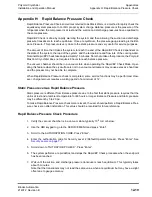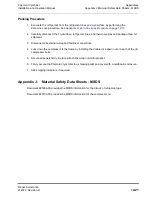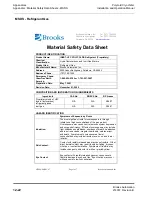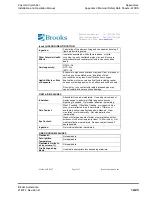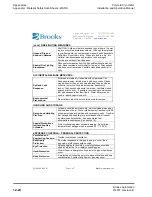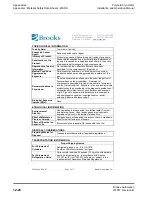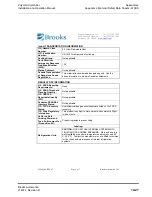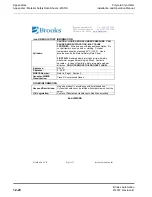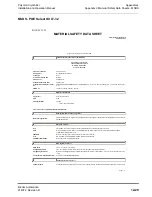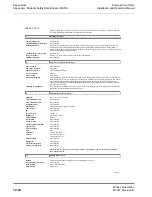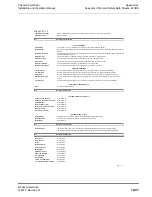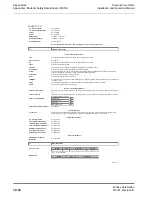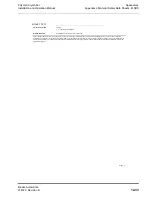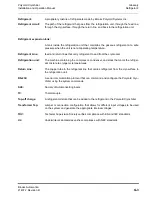
Appendices
Polycold Cryochiller
Appendix J: Material Safety Data Sheets - MSDS
Installation and Operation Manual
Brooks Automation
12-24
214072 Revision B
Brooks Automation, Inc.
Tel (707) 769-7000
3800 Lakeville Highway
Fax (707) 769-1380
Petaluma, CA 94954
www.brooks.com
825086-00 REV 07 Page 3 of 7
Brooks Automation, Inc
(cont.) FIRE-FIGHTING MEASURES
Unusual Fire and
Explosion Hazards:
CAUTION: Cylinders that are exposed to heat from a fire may
rupture or burst and release contents. Although this material
is non-flammable, the contents can present health hazards to
firefighters if involved in a fire. When involved in a fire, this
material may decompose and produce toxic hydrogen
fluoride and carbonyl fluoride gases.
Special Fire Fighting
Procedures:
Move containers away from fire if possible without personal
risk. Keep containers cool well after fire is out. Stay upwind
and keep out of low areas. Ventilate closed spaces prior to
entry.
ACCIDENTAL RELEASE MEASURES
Spill and Leak
Response:
Stop leak immediately if possible without personal risk.
Keep people away, isolate area, and deny access. Gases
may be heavier than air and spread along the ground and
collect in low or confined areas (sewers, basements,
tanks). Stay upwind and avoid low areas. Ventilate closed
spaces prior to entry. If possible, turn leaking containers so
that gas escapes rather than liquid. Water spray may be
used to reduce vapor cloud drift.
Environmental
Precautions:
Do not allow product to enter drains or watercourses.
HANDLING AND STORAGE
Storage and Handling
Practices:
Cylinders should be stored in dry, well-ventilated areas away
from sources of heat. Store cylinders away from heavy traffic
or equipment operation areas and emergency exits. Confirm
that storage and handling is in accordance with all current
regulations and standards. Keep separated from
incompatible substances (See section 10).
Special Precautions
for Handling Gas
Cylinders:
Protect cylinders against physical damage. Do not allow
temperature of storage areas to exceed 52
o
C (125
o
F).
EXPOSURE CONTROLS – PERSONAL PROTECTION
Ventilation and
Engineering Controls:
Provide local exhaust ventilation.
Respiratory
Protection:
If a worker exposure to this gas is going to occur, then
respiratory protection should be used.
Eye Protection:
Splash goggles, face shields, or safety glasses should be
used for protection from rapidly expanding gas.
Hand Protection:
Wear Viton or rubber gloves if contact with gas or liquid may
occur.
Body Protection:
A protective suit should be worn to prevent frostbite and skin
contamination if contact with liquid or gas may occur.










